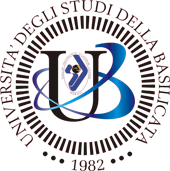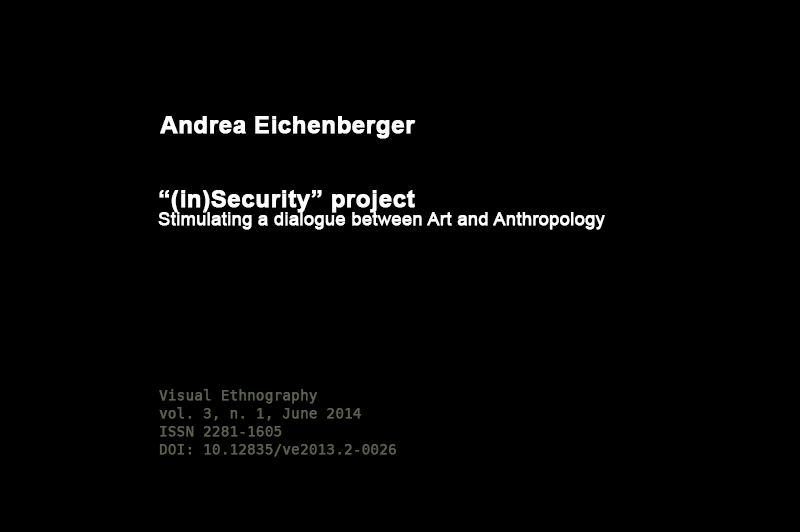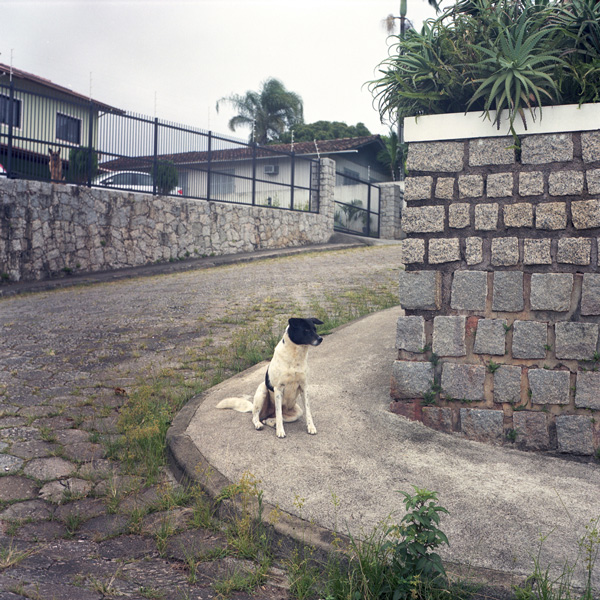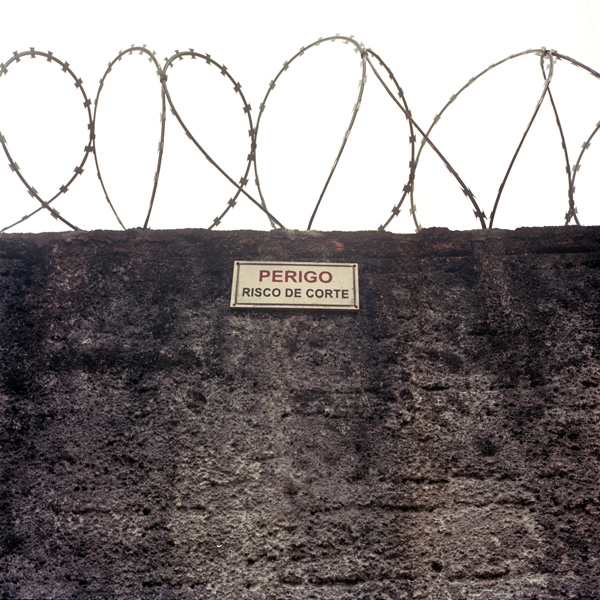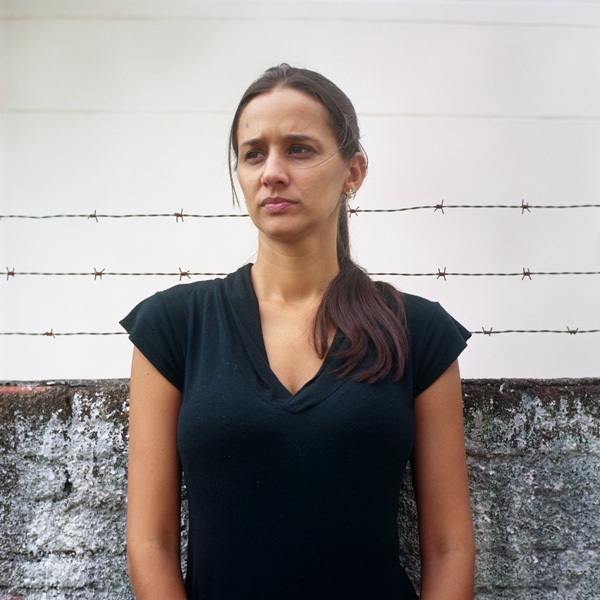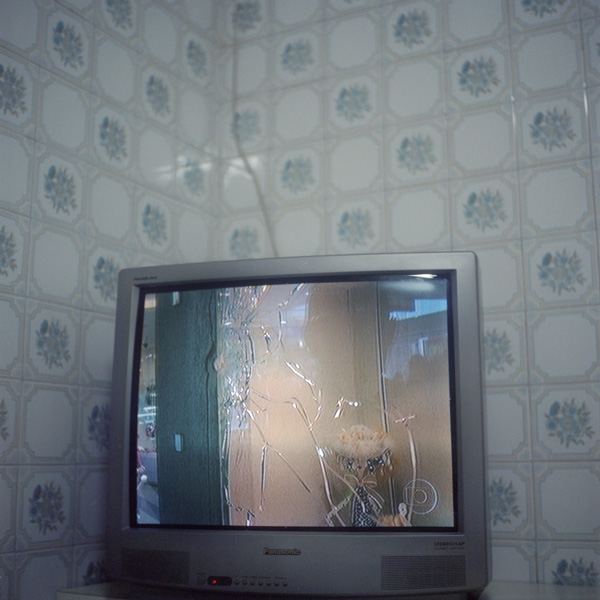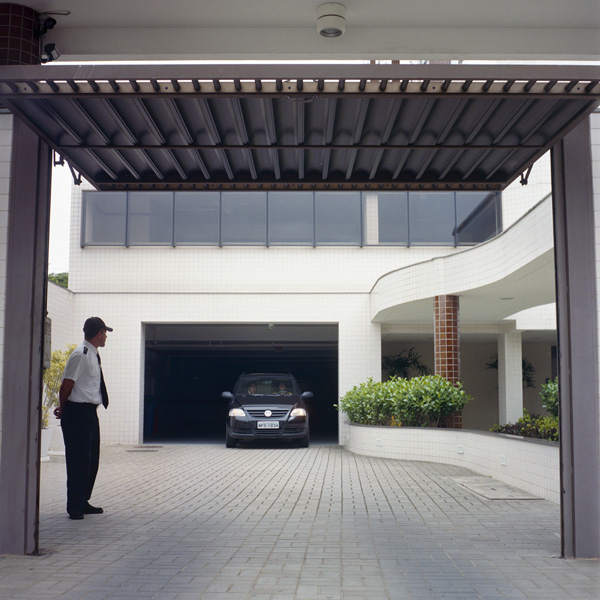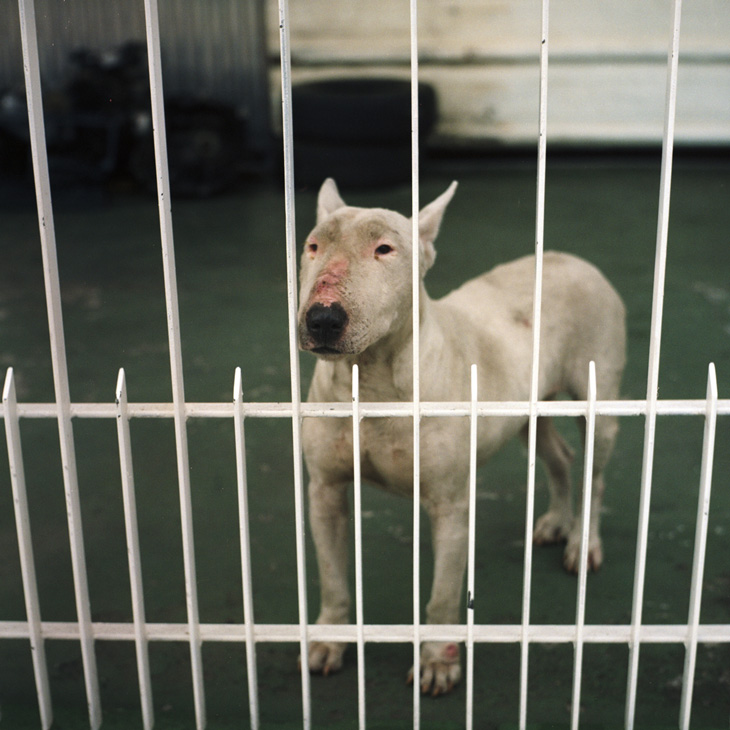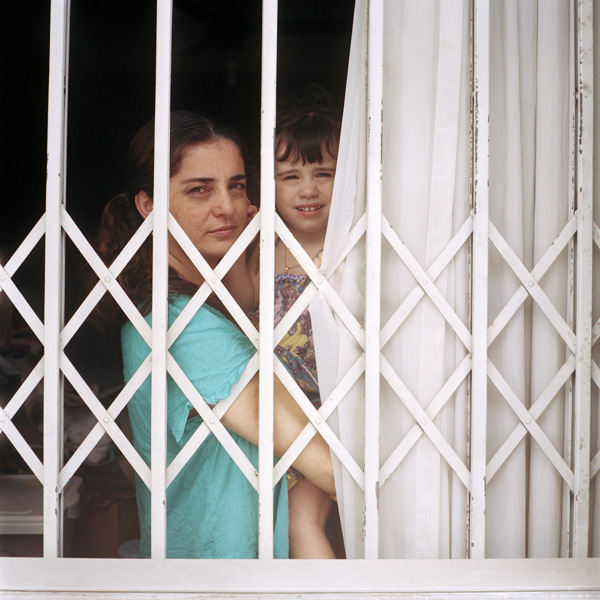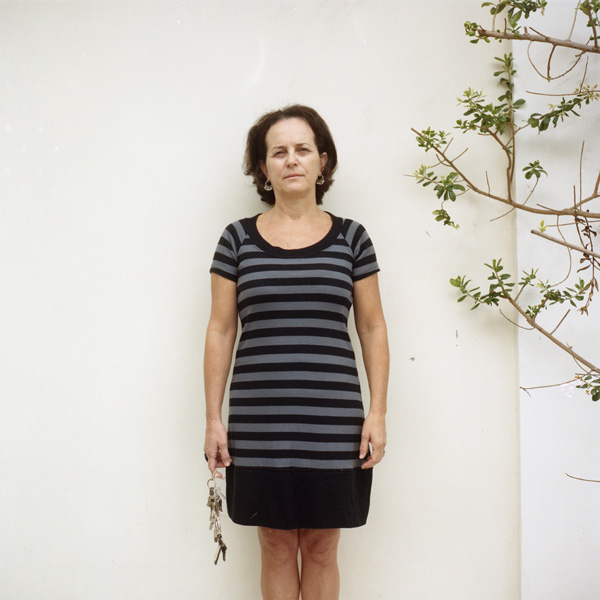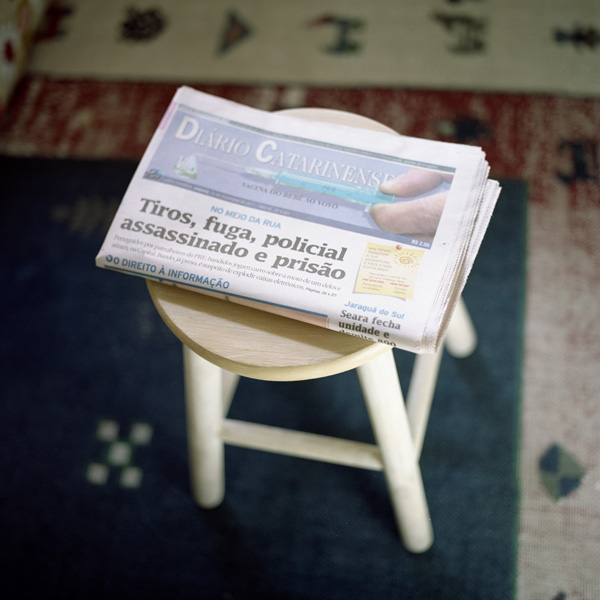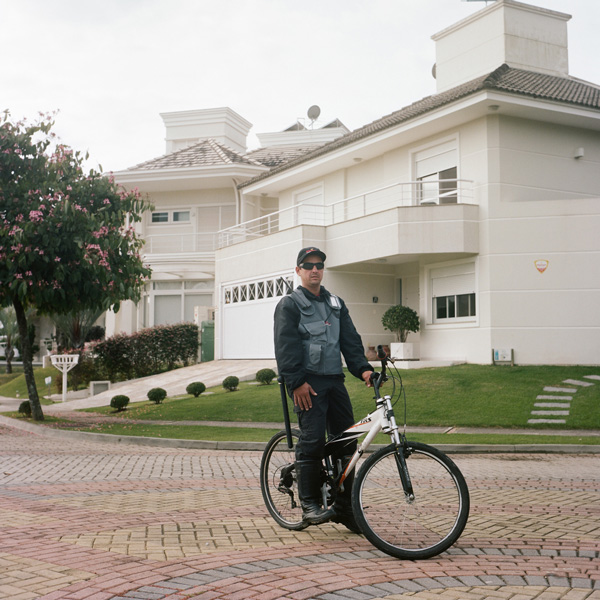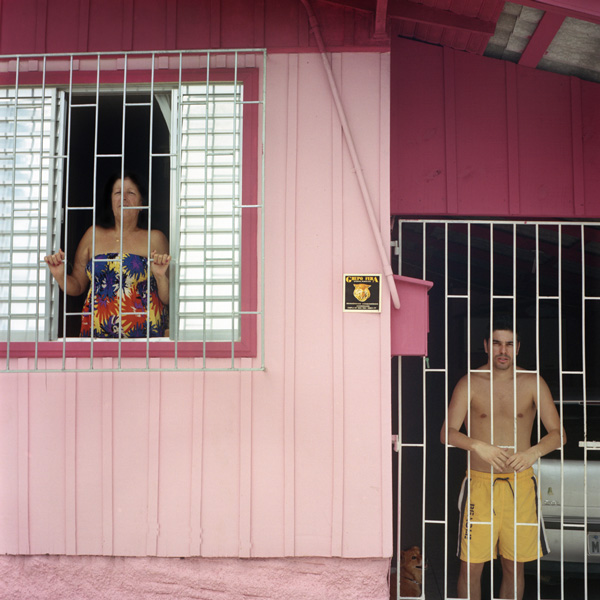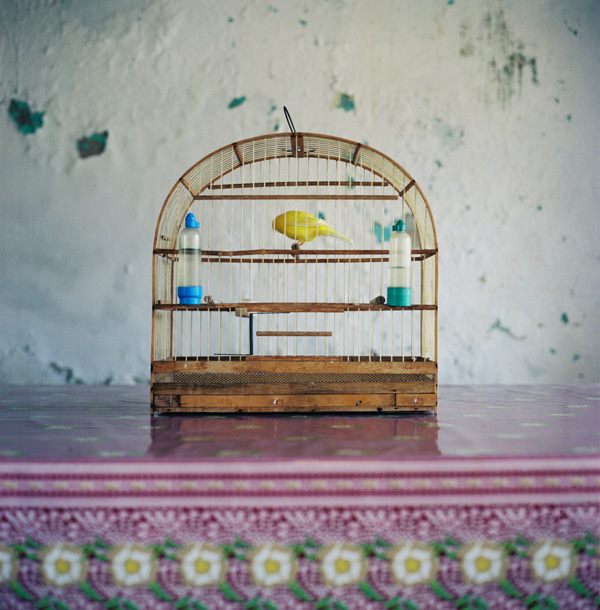-
Andrea Eichenberger has a doctorate in Anthropology / Sociology from the University Paris 7 - Paris Diderot and the Universidade Federal de Santa Catarina (UFSC). Before studying Anthropology, she obtained a Bachelor's degree in Visual Arts. She was a postdoctoral researcher in the History of Art at the University Paris 1 - Panthéon-Sorbonne and is currently a postdoctoral researcher at VU University Amsterdam. -
Since 2003, I have spent most of my time outside of Florianópolis, a city in southern Brazil, the capital of Santa Catarina state, where I was born and where I grew up. My going back and forth, my being far away and so the astonishment I feel when I come back, have made me intensely aware of the many transformations which the city has undergone, especially as regards the issue of security / insecurity in the public and private urban space. Whenever I came back, something new jumped out at me: the increasing amount of bars on the windows and on the doors of houses, the number of locks, the walls becoming higher and higher, some reinforced with broken glass and barbed wire, the electric fences, gates and electronic gates, the video cameras and security guards at the entrance of buildings, homes and in the streets, guard dogs behind bars, etc. I wondered how we had arrived to this point, why and how far we would go.
All these things, which have caused a gradual transformation in the urban space, bothered me. I did not recognize my city because of the presence of such security equipment. In early 2011, I expressed to an anthropologist friend, Marta Antunes Magda Machado (who, like me, was born and grew up in Florianópolis), how much this intrigued and disturbed me. We discussed this situation at length and on several occasions, and these conversations convinced us of the interest and the need to talk about this theme, but not only as a subject of research within the university community. We also wanted to talk to the people directly affected by the ‘problem’. Thereafter, I started a post-doctoral research in History of Art / Photography at the University of Paris 1, during which I was able to develop these issues, at the same time as connecting theoretical reflection with photography. -
Our desire to move beyond the borders of academia and to talk to more people, led us to ask ourselves about some points. How can we talk about this subject in a different way? How can we talk about insecurity, something which is so abstract, without remaining attached only to the textual writing? How can we present the issue so that the work also affects other people outside the scientific arena? Should we resort to people’s feelings? Could we evoke these feelings through the images? As Marta is an anthropologist and I am an artist-anthropologist, would it be the work between the disciplines that would bring interesting elements which would develop different aspects of the subject? Could art and anthropology exchange ideas while taking mutual advantage of each other to reflect on the issue? It is from these questions that we started off on the challenge of working in a partnership, which would look at the theme of insecurity both as a "social subject” and an "artistic object".
The "social subject" was therefore approached via an ethnography, through which we sought to observe, in conversations with some inhabitants of Florianópolis, how they saw themselves in relation to the issue of security / insecurity in the city and what they thought about the question. We also wanted to understand how they positioned themselves in relation to otherness, this “other” (bandit, marginalised person), who is often “invisible”, and in relation to the constant desire for a "non-meeting".
Many Brazilian cities, including Florianópolis, have experienced significant changes during the last three decades, due to the gradual and widespread presence of security features in the urban landscape. In this context, from the 1980s, many researchers have focused on topics such as crime, violence, insecurity and fear within works that sought to identify and explain the reasons for the growth of urban violence in Brazil (Eckert, 2010; Caldeira, 2011). These reasons are many and have been interpreted with different nuances from one piece of research to another. Often, protection apparatus are understood as elements of segregation and social discrimination, as prejudice reproduction, and somehow, as the negation of relations between social actors. -
In our study, we wanted to especially look at the negation of the encounter with “the other” (in the case of our interviews, “the other” often called “they” generic: to designate “criminals”, “the marginalised”, “the poor”) as also a form of sociality (Rifiotis, 1997). It is through this denial, this constant desire for a "non-encounter" that we approached people and investigated their personal experiences, to find out what they thought of the security features in the public and private urban space. What were their experiences of this situation? What feelings and practices have become part of their lives because of the spreading presence of this equipment? – All these questions, and an analysis of emerging ethnography that we were able to do, are developed in a unpublished paper written “by four hands” with Marta Antunes Magda Machado.
The "art object" was built based on a visual anthropology and on the dialogues that this can encourage. We were looking for “a renewed approach to art in the discipline (Anthropology)”, as a strategy of representation and as "a powerful analytical concept for the ethnographic and comparative practice" (Machado & Eichenberger). Photography is the artistic activity and research tool that I use the most. However, at this time when photography is contemporary of art, (Poivert, 2012), with a tendency to interact with other art media (video installations, etc.), I chose to incorporate the use of video into the research (we can say that today, most photo cameras have a video camera in their system, which encourages photographers to make films). In this context, the project explores ways of relating photography and video and how they can contribute to a dialogue between disciplines. -
The two media used, photography and video, contain potentialities which together add value to our work, both from an anthropological and artistic point of view. Whether the image is photographic or videographic, thanks to its aesthetic, descriptive and sensory qualities, it can support and amplify the practice of anthropology; in the same way that anthropology can provide interesting elements for the artistic activity. So, it is by having as a slogan the notion of "complementarity" that we have appropriated photography, video and ethnography to develop this project. For this reason, even if photography is highlighted in this piece of work, it is important to note that the three approaches are deeply connected. In addition to working together for the conduct of the research / artwork, one activity stimulated the existence of the other during the fieldwork. Photography (documenting, taking portraits and evoking atmospheres) made possible meetings between researchers and research subjects, which was necessary for the implementation of the ethnography (which describes and which collects data for analysis). This latter activity, in turn, brings proximity and establishes a certain intimacy between the people involved, which was interesting for the conversations we filmed (in which participants expressed their thoughts and feelings). This means that different possibilities are used by each practice for the construction of the project, which would be shared later on, not only with anthropologists or other researchers, but also with an audience outside the university.
-
The first piece of fieldwork took place in January 2011, when we went out into the streets of the various neighbourhoods of Florianópolis, from the most working-class districts to the most affluent areas, in search of homes and visually interesting security features for photography. Together, on foot or by car, we strolled through the city. I photographed and Marta participated by showing me things she found interesting, assisting me during the photo shoots, or simply paying attention to our security, as we were exposed with our equipment in the streets (had we become our own research subjects?). We began by documenting the presence of security features in homes and buildings. More than any type of documentation, photographs were constructed with the desire to evoke other things rather than just the presented object. I tried to capture the atmosphere that was conjured up by the silent fear that had invaded people’s customs; the invisible nature of the danger.
Additionally, photography has been used as a way to go towards the encounter with “the other”, as mentioned before. So, photography provided the contact element which was the vehicle for the interaction with the inhabitants of the city. On several occasions, we talked with people who were in the street or in front of their homes; these were people who were totally unknown to us. Contradictions began to appear. Contrary to what we might imagine, people opened their gates and invited us to go inside; showing no suspicion. The camera took on its function as a promoter of contacts by establishing an inter-relationship in which both we the researchers and also the inhabitants of Florianopolis were deeply involved (Rial, 1988). The project gave the people of Florianopolis an opportunity to express themselves about all these issues that had bothered them for many years now.
Following on from this process, which had led us to approach strangers, some of our family and friends, who had been informed about our activities, began to tell us about people who might "interest" us: a friend, a neighbour, someone in the family, etc. People who protected themselves a lot, who had (or not) stories to tell us, or even people who only protected themselves a little or not at all; thus becoming a cause for curiosity. So, guided by the idea of exploring what people think about the ever more widespread presence of security features in daily life, we photographed and filmed different people in many places in the city over two years.
-
Returning to the idea of "openness", as I said previously, the photography in this project is also intended to promote a different type of encounter, which takes place in a “second moment”: an encounter between the research and a larger and more varied public. Photography (and video) plays an important role in the contemporary art world. So, why not take advantage of that? Linking art and anthropology, as well as being a way to boost the opportunities and strategies of representation for both disciplines, is also a way to ensure that research does not stay restricted to academia. Art now can be seen in the most diverse spaces: galleries museums, the Internet, the streets, etc. So, why shouldn’t research get out of the libraries to reach out to other spaces?
Released in 2012, the film Leviathan, directed by Lucien Castaing-Taylor, director of the Sensory Ethnography Lab (SEL) at Harvard, and by Verena Paravel, might be an example of this type of project. This experimental film about the North American Fishing industry is the result of a project carried out in keeping with Jean Rouch’s work – “make a film not about the fishermen, but with the fishermen”, by opening up a “new physical relationship with cinema” where “the operator suddenly disappears before all of the eventualities of things, of elements, of the world” (Genoudet, 2013). By exploring the sensory possibilities of film, these two anthropologists have been able to reach a large audience as the film was distributed internationally and screened in many cinemas.
-
Another example is the work of the North American anthropologist H. Gavin Whitelaw about the material culture of the convenience store (or Konbini) in Japan. After developing an ethnographic field research in one of these stores (where he also worked as an employee in order to understand the logic of this type of trade), he curated an exhibition that rebuilt a convenience store within a university museum in Tokyo. The store contained the hundreds of objects commonly found in these places. “Within the exhibition space, neon signs, product racks, uniforms and plastic containers helped visually reconstitute this modern corner shop from the street to its ‘backyard’”. In a workshop about art and waste at the University of Leiden, Netherlands, in May 2014, Whitelaw examined “how konbini and wastefulness are played with and inverted in museums and gallery spaces and engage the public in a more active examination of consumption, excess, and the social production of value”. If we compare these two events, the exhibition at the Museum had 7,000 visitors in three months, while during his speech at the University of Leiden barely twenty people were present.
However, despite the many potential opportunities, these initiatives which encourage dialogue between disciplines are still uncommon. In the case of use of photography by anthropologists – whether it is considered as an auxiliary instrument of study, a notepad, an element which illustrates or which is in dialogue with the text, or a separate and unique language in itself – the trend is to restrict photography to a scientific approach (as opposed to what is an art from). Several researchers have worked to make its use systematic in the social sciences, such as pioneers like Bateson and Mead (1942) and Coolier Jr. (1968). This has subsequently led to a wave of iconic work, which is called "Visual Anthropology". However, even if photography is able to attract because of its visual characteristics and its ability to incorporate other dimensions of anthropological research, normally, "in the context of the construction of knowledge in the fields of social sciences, in order to produce meaning, it must be read in a specific manner, that is to say, its content must be (re)described and (re)interpreted through textual, oral or written discourse” (Guran, 2011).
-
Various researchers have questioned why this instrumentalized approach to the use of photography should be favoured, such as Sylvain Maresca. He believes art does not need to be “thinking about thinking” (Maresca, 1996, p.196). For this sociologist, “the ability to produce without necessarily resolving everything, makes the artistic act really operationally effective”, and also, “art demonstrates contradictions, to which it gives full expression, before trying to remove them; moreover, art should work on these contradictions rather than reduce them”. At the same time as measuring the specificities of each discipline, the sociologist notes that "the operating effectiveness of art and its ability to explore are assets for questioning the intellectual approach”. And he even suggests that the “real interest of putting art and science in perspective” would be “(…) not to subject the aesthetic creation to conceptual thought by, at all costs, looking to theorise the knowledge that art conveys, but rather by comparing their respective procedures, highlighting what each one does and by letting one be highlighted by the other” (ibid.).
In the light of such a process, could the anthropologist make her/his work more accessible? Could she/he go beyond the limits of the academy, by reducing, through art, the gap caused by a sometimes excessive intellectualization of knowledge about ‘the other’ (about us)? Could she reach other audiences and other fields and so share information that may be interesting to a larger number of people? The difference between visual approaches and conceptual approaches remains large in anthropology. While an attempt to reduce this could act in favour of the discipline. Art, as shown by Foster (2005), has appropriated anthropology much more freely than the contrary. It is perhaps time for anthropology to also give itself this ‘freedom’. In any case, the few experiments that are emerging in the social sciences demonstrate new possibilities.
-
Caption
To date, the complete work has not been shown yet. Some photographs were exhibited in Paris in 2012 at the Maison des Photographes (UPP) and, in 2013, at the Maison du Brésil at the Cité Internationale Universitaire de Paris. The set should be exhibited in the near future in Florianópolis, the city in Brazil where the series was developed. In the exhibition, a text presents the subject and context. The photographs are exhibited on their own, without texts and captions. They are considered as visual texts which convey information in their own way. Beyond documentation, they seek to express moods, tensions, feelings. Videos convey narrative information, that presents and situates the subjects of the photographs in the context in question. The three mediums are brought together around the word "complementarity".
-
Refbacks
- There are currently no refbacks.
ISSN Print 2499-9288
ISSN Online 2281-1605
Publisher Edizioni Museo Pasqualino
Patronage University of Basilicata, Italy
Web Salvo Leo
Periodico registrato presso il Tribunale di Palermo con numero di registrazione 1/2023

